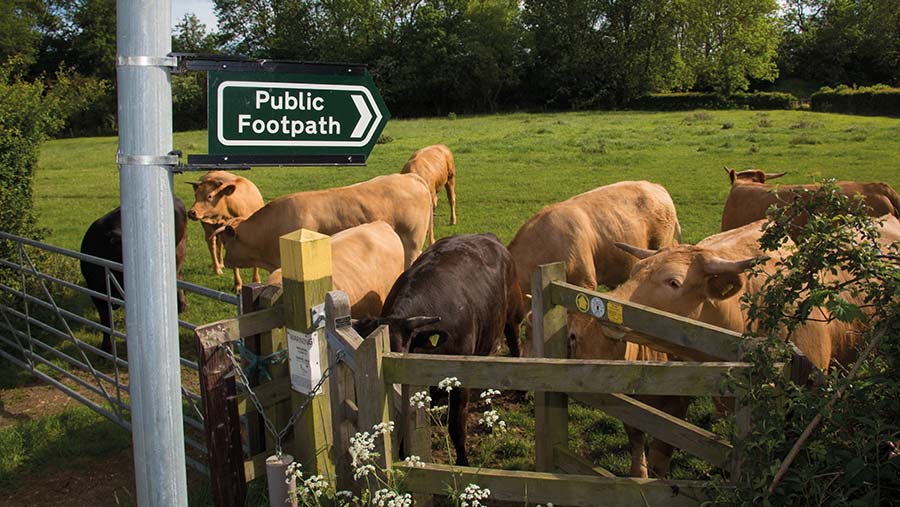Business Clinic: How to get correct public liability cover?
 © Tim Scrivener
© Tim Scrivener Whether you have a legal, tax, insurance, management or land issue, Farmers Weekly’s Business Clinic experts can help.
Tim Slinger, regional director at A-Plan Rural Insurance, outlines how to reduce the risk of a public liability claim and what cover is advised.
Q: We run a mixed farm with arable, beef and sheep enterprises near a fairly large town and are increasingly aware that the farm is our shop window, so to speak.
There are footpaths on the farm and so we want to make sure we haven’t overlooked any liability issues associated with that and our livestock enterprises in general. What do you suggest?
A: As the days lengthen more people are likely to be out and about enjoying the countryside.
That makes it a good time for all farmers to consider whether everything is in order: Are routes safe for the public, and are you, your animals and your business properly protected?
See also: Business Clinic: how does livestock theft cover work?
You’re no doubt aware that you can be held responsible should a member of the public get hurt or suffer other damage on your property.
Rights of way
In England and Wales, the Countryside and Rights of Way Act 2000 gives public right of access to land mapped as “open country” (such as mountain, moor, heath and down) or registered common land.
This is in addition to established and mapped footpaths and bridleways.
In Scotland, the Land Reform Act 2003 gives anyone right of access over land throughout the country, provided they behave responsibly and subject to specific exclusions set out in the act.
When people set foot on your land – legally or otherwise – it becomes your responsibility to ensure their safety.
If you have public rights of way on your land, it’s down to you to:
- Ensure you don’t block a right of way
- Cut back overgrown vegetation from gates, paths, bridges and stiles
- Restore the surface of a public right of way if you carry out activities such as cultivation.
Signage, gates and other steps
There’s plenty more you need to do to help the public access your land safely and therefore reduce the risk of an accident or incident and subsequent claim:
- Put up clear and visible signs to warn of dangers and provide advice. For instance: “Bull in field” and “Keep all dogs on leads.”
- Signpost paths to help people keep to them.
- Fit gates (preferably spring-loaded) or other means of closure at field entry points.
- Don’t keep animals you know are dangerous in places where there is public access. Bear in mind that visitors might not know how animals behave, especially when they are protecting their young.
- Take extra precautions for bulls – some dairy breeds are banned from being kept in fields crossed by public rights of way.
- Ensure that the general public is not affected by chemical drift from spraying operations on your farm.
- Safely stack bales and logs or wrapped silage away from public access to reduce the risk of accidents.
Ensure you have the right cover
Having the right insurance includes the correct level of public liability cover.
Typically, farm insurance policies cover public liability to a limit of £10m and we strongly recommend this as a minimum to fully protect your interests.
If you end up in a dispute over a right of way this can be expensive, so consider getting cover for legal expenses too.
This can include access to a free legal advice helpline.
Additionally, if you operate as a company, it’s worth considering directors and officers liability insurance, often referred to as D&O insurance.
This pays compensation to directors in the event of losses following legal action.
Do you have a question for the panel?
Outline your legal, tax, finance, insurance or farm management question in no more than 350 words and Farmers Weekly will put it to a member of the panel. Please give as much information as possible.
Email your question to FW-Businessclinic@markallengroup.com using the subject line “Business Clinic”.
